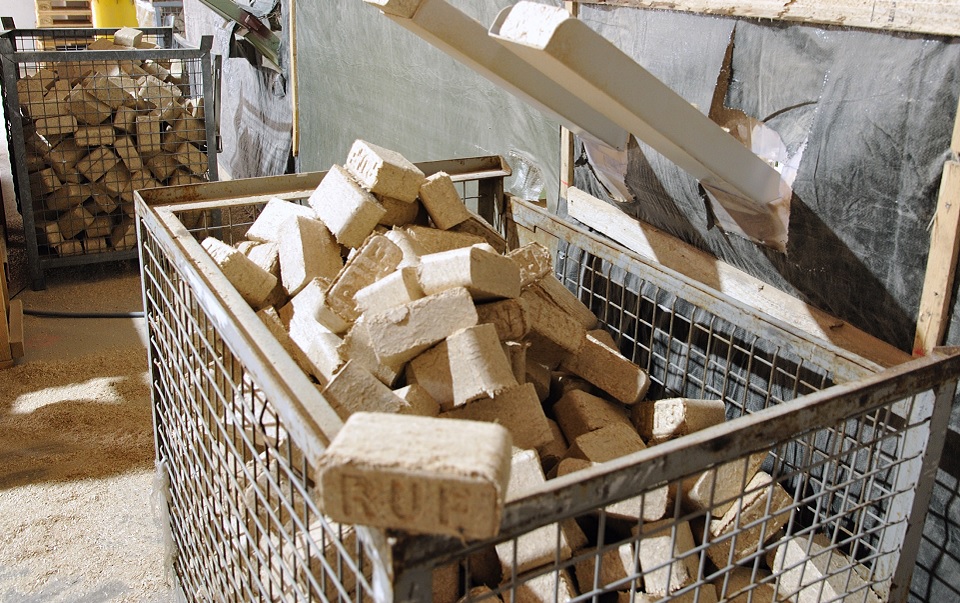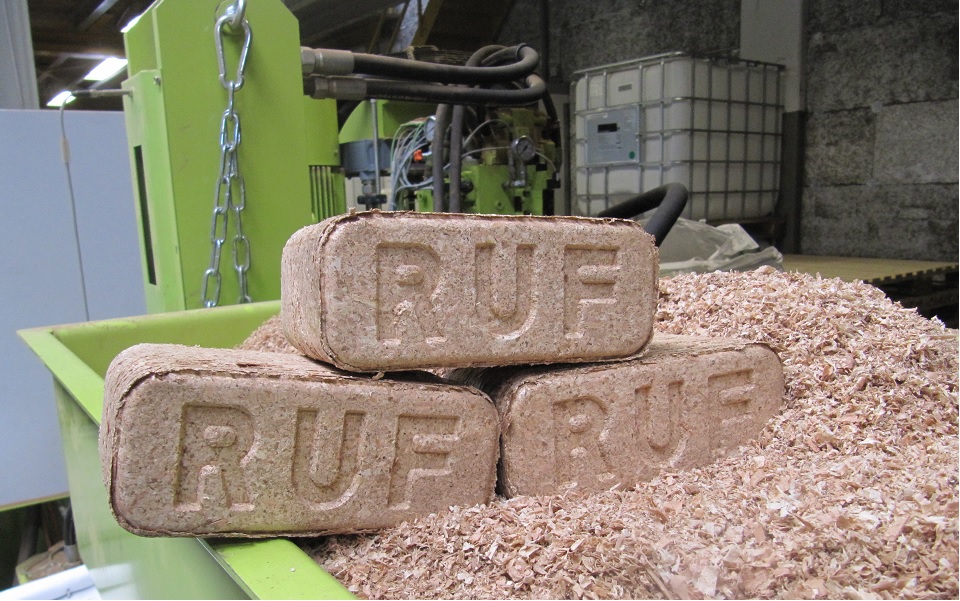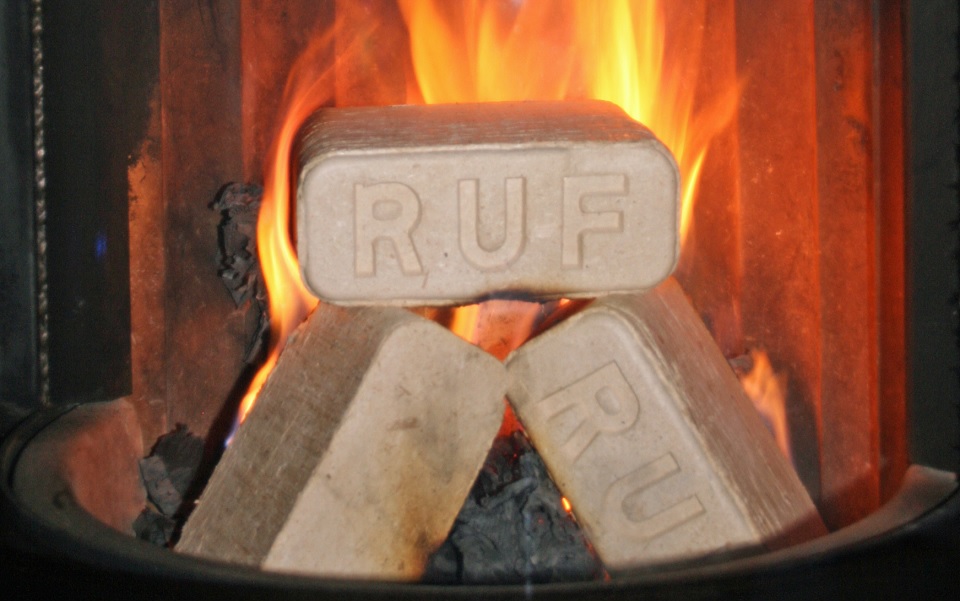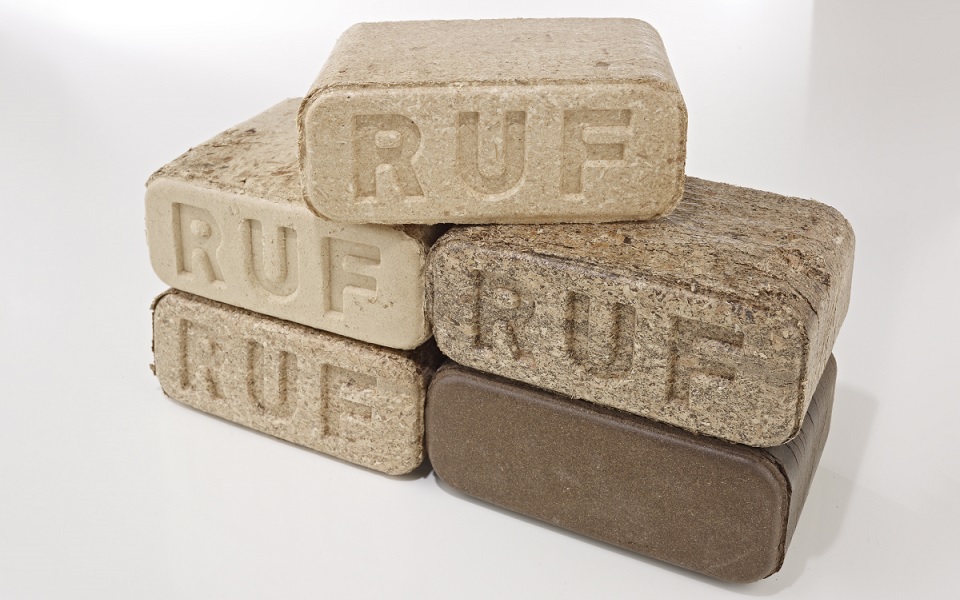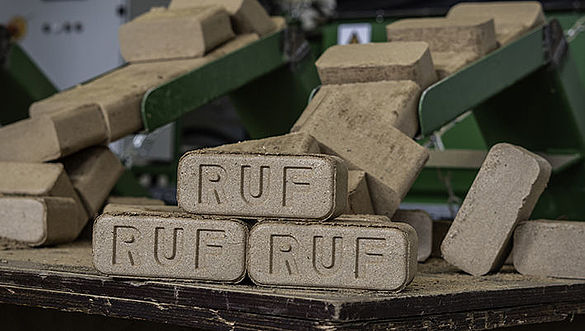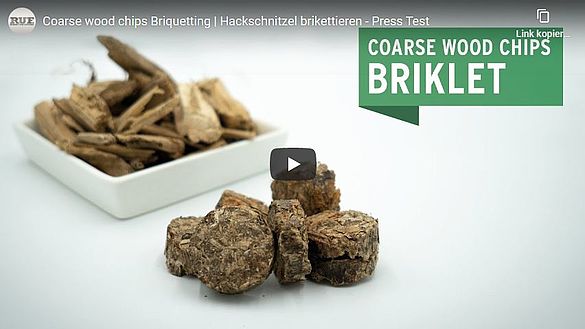Wood briquettes are good for the environment and your wallet Wood briquettes can become a sustainable option instead of fossil fuels
When processing wood, shavings and wood residues are generated, sometimes in large quantities. This can be a valuable raw material, if it is processed into briquettes using high-quality machinery. According to Andreas Jessberger, Sales Manager at RUF Briquetting Systems, wood briquettes are a sustainable fuel for many households and an important alternative to fossil fuels. They also hold great economic potential for the timber industry and wood-working trade.
Energy costs have been rising continuously since the beginning of 2022. Especially fossil fuels such as oil and gas are becoming permanently more expensive and are finite resources that release CO2 during combustion. They are therefore a burden on the environment and increasingly also on the wallet of the end consumer, which makes private households in particular look for alternatives. That is why wood-burning stoves and fireplaces are being used more and more. Wood fired boiler heating systems with buffer storage and pellet heating systems are also being installed increasingly. Wood-burning stoves have an important advantage here: both logs and wood briquettes can be burned as regenerative fuels.
In Germany alone, there are now more than 10 million individual fireplaces in households and the annual consumption of wood briquettes is almost one million tonnes - and rising. Although the prices for regenerative energy sources are also rising, "on a long-term average, wood briquettes are significantly cheaper than fossil fuels," explains Andreas Jessberger and adds: "At the same time, they are sustainable and ecological, because when the wood briquettes are burned, only as much CO2 is released as the forest binds through sustainable cultivation - the CO2 is therefore in a cycle." Moreover, primary wood is not typically used for briquetting. Rather, wood by-products are used, as they are produced as "waste" during wood processing.
The decisive factor here is that companies in the timber industry and the woodworking trade do not dispose of their chips arbitrarily, but rather forward them for further processing by briquetting. Even for medium-sized companies with a chip volume of 100 tonnes per year, it is worthwhile to purchase their own press, such as the RUF 100. Through the sales revenue alone, the investment pays for itself within a few years. The service life of the RUF briquette press is several times longer.
At the same time, the operation of the machines is simple. All that needs to be done is to collect the dry chips and fill them into the hopper of the press via a conveyor system. The finished wood briquettes then fall out of the machine and are usually packed manually or semi-automatically directly afterwards - usually in 10 kg packages. If the wood briquettes are packed and stacked on pallets fully automatically, RUF briquetting presses can be operated in unmanned 24/7 shifts. Only monitoring of the overall system is then necessary.
The specific pressing pressure of the RUF systems designed for wood is 1,700 kg/cm2. Jessberger comments: "Thanks to the high pressure, these plants produce briquettes with such high density and strength that no binders are ever needed." A fact that makes the production process simple and cost-effective.
Andreas Jessberger, sales manager at RUF
"Thanks to the high pressure, these plants produce briquettes with such high density and strength that no binders are ever needed."
Wood briquettes burn with low emissions and form good embers
Wood briquettes made from uncontaminated material are ideal for the home stove and provide a pleasant and long-lasting warmth. They burn with low emissions and little ash, while also forming a good ember. Whether hardwood or softwood briquettes are burnt does not make much of a difference, because the density produced is very similar. The heating values of both types of briquettes are also almost identical and, at around 5 kWh/kg, are higher than that of logs. The decisive factor here is the briquettes' low water content of around ten percent. With air-dried logs, this can be up to 20 percent.
Another advantage of the briquettes is that they require significantly less space for storage. Especially the rectangular RUF variants can be stacked perfectly in the house with minimal gaps. A pleasant side effect: wood briquettes are free of any other dirt and insects.
Properly fuelled and utilised, wood-burning stoves can therefore make an important contribution to sustainable heat generation. In doing so, the instructions of the stove manufacturer must be followed carefully. Because only if clean and uncontaminated fuel - such as wood or wood briquettes - is used as intended, can a largely low-pollutant and low-dust burning be guaranteed. To further improve this, new stove models are equipped with an electrostatic dust reduction device. Existing ovens can be retrofitted with it in some cases.


